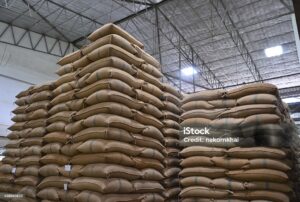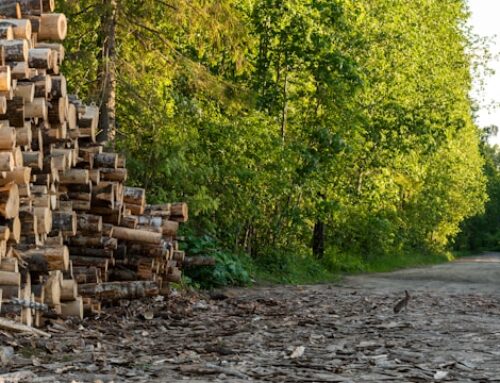
Rice. Just the word conjures images of steaming bowls, vibrant curries, and fertile paddies stretching towards the horizon. More than just a staple food for billions, rice is a significant global commodity, its cultivation, trade, and consumption deeply interwoven with history, culture, economics, and increasingly, the pressing challenges of a changing climate. This grain, seemingly simple, holds a complex and crucial position in the world’s food system. Let’s delve into the multifaceted world of rice, exploring its past, present, and future.
A Journey Through Time: The History of Rice Farming
The domestication of rice represents a pivotal moment in human history, marking the transition from nomadic hunter-gatherer societies to settled agricultural communities. Archaeological and genetic evidence suggests that rice cultivation originated in two primary centres: Asia and Africa.
Rice, a staple food for billions across the globe, transcends its simple form as a grain. It is a cornerstone of cultures, a driver of economies, and a critical component of global food security. This seemingly humble seed holds a rich history, fuels industries, and navigates the complexities of international trade. Understanding rice as a commodity requires delving into its past, present, and future, especially in the face of evolving environmental challenges.
A Journey Through Time: The History of Rice Farming
The cultivation of rice boasts a history stretching back millennia, with archaeological evidence suggesting its domestication in Asia as early as 9,000 years ago. The Yangtze River Valley in China and the Ganges River Valley in India are considered primary centres of origin. From these cradles, rice cultivation gradually spread across Asia, becoming deeply intertwined with the social, cultural, and agricultural practices of countless civilisations.
Early rice farming was labour-intensive, relying on monsoon rains and rudimentary tools. Over centuries, farmers developed sophisticated irrigation systems, terracing techniques, and methods for seed selection, leading to increased yields and the diversification of rice varieties. The Silk Road facilitated the movement of rice westward, though its significant adoption in Europe and the Americas came much later, largely driven by colonial expansion and the transatlantic slave trade, which brought rice cultivation knowledge and enslaved Africans to the New World.
The 20th century witnessed a transformative period in rice farming with the advent of the Green Revolution. High-yielding varieties (HYVS), developed through scientific breeding programs, dramatically increased production in many Asian countries, helping to avert widespread famine. This era also saw the increased use of fertilisers, pesticides, and mechanisation, further boosting yields but raising concerns about environmental sustainability.
Global Granaries: Countries That Harvest Rice
Today, rice is cultivated in over 100 countries across the globe, but a significant portion of global production is concentrated in Asia. The top rice-producing nations include:
- China: The world’s largest producer, accounting for a substantial share of global output.
- India: The second-largest producer, with rice being a staple crop across the country.
- Indonesia: A major producer in Southeast Asia, with rice forming the core of the national diet.
- Bangladesh: Rice is the primary agricultural crop and a vital food source.
- Vietnam: A significant producer and a major exporter of rice.
- Thailand: Another key player in the global rice trade, known for its high-quality aromatic varieties.
- Myanmar: An emerging significant producer in Southeast Asia.
- Philippines: Rice is a fundamental part of the Filipino diet and agricultural sector.
- Japan and South Korea: While production has decreased in recent decades, they still maintain significant rice cultivation.
Beyond Asia, rice is also grown in parts of Africa, the Americas (especially the United States, Brazil, and several Latin American countries), and Europe (primarily Italy and Spain). However, the scale of production in these regions is considerably smaller compared to Asia.
The Right Foundation: Soil Requirements for Rice
Rice thrives in specific soil conditions that allow for water retention, a crucial factor for its unique cultivation method in flooded paddies. The ideal soil for rice cultivation is:
- Heavy-textured soils: Clay or clay loam soils are preferred due to their high water-holding capacity and low permeability, which helps maintain the flooded conditions necessary for optimal growth.
- Slightly acidic to neutral ph: Rice generally grows best in soils with a ph ranging from 5.5 to 7.0.
- Rich in organic matter: While not strictly essential in the initial stages due to the addition of fertilisers, soils with adequate organic matter contribute to better soil structure, nutrient availability, and water retention over the long term.
- Level topography: Relatively flat land is ideal for constructing and maintaining paddy fields, ensuring uniform water distribution.
While these are the ideal conditions, rice can be grown in a wider range of soil types with appropriate management practices, including soil amendments and water management techniques. However, yields may be lower in less-than-ideal soils.
Beyond the Plate: Industrial Uses of Rice
While primarily known as a food source, rice and its byproducts find various applications in industries:
- Food Processing: Rice flour is used in baking, noodles, and various processed food products. Rice bran oil, extracted from the outer layer of the grain, is valued for its nutritional properties and used in cooking and cosmetics. Rice syrup is used as a sweetener.
- Beverage Industry: Rice is a key ingredient in the production of alcoholic beverages like sake (Japan), rice wine (various Asian countries), and beer (as an adjunct).
- Animal Feed: Broken rice and rice bran are used as components in animal feed formulations.
- Manufacturing: Rice husks, a byproduct of milling, are used in the production of particleboard, cement, insulation material, and as a source of silica. Rice straw is used for thatching, weaving, and as a soil amendment.
- Pharmaceuticals and Cosmetics: Rice starch and other rice-derived compounds are used in some pharmaceutical and cosmetic products due to their absorbent and emollient properties.
Global Trade Flows: Importers and Exporters of Rice
The international rice trade plays a crucial role in ensuring food security for many countries. The biggest importers of rice are often those with large populations and/or insufficient domestic production to meet demand. These include:
- China: Despite being the largest producer, China is also a significant importer to meet its vast domestic consumption and for strategic reserves.
- Philippines: A large consumer with fluctuating domestic production.
- Nigeria: A rapidly growing population with increasing demand for rice.
- Indonesia: While a major producer, it also imports rice to stabilise prices and ensure supply.
- Saudi Arabia and other Middle Eastern countries rely heavily on imports to meet their rice consumption needs.
- African nations: Several countries in Africa, particularly in West Africa, are significant rice importers.
The major exporters of rice are countries with surplus production and established trading infrastructure:
- India: The world’s largest rice exporter, shipping significant quantities of various rice types.
- Thailand is known for its premium quality aromatic rice varieties like Jasmine rice.
- Vietnam: A consistent and significant exporter, particularly of white rice.
- Pakistan: Exports a substantial amount of basmati and non-basmati rice.
- United States: A significant exporter of long-grain rice.
- Myanmar and Cambodia: Emerging as important rice exporters in Southeast Asia.
Nutritional Powerhouse: The Contribution of Rice
Rice is a significant source of essential nutrients, particularly carbohydrates, which provide the body with energy. The nutritional profile of rice varies depending on the variety and the level of processing (e.g., white rice vs. brown rice):
- Carbohydrates: Primarily starch, making it a high-energy food.
- B Vitamins: Especially thiamin (B1), niacin (B3), and folate (B9), which are important for nerve function, energy metabolism, and cell growth. Brown rice retains more B vitamins compared to white rice.
- Minerals: It contains manganese, magnesium, phosphorus, and selenium, although the levels are generally higher in brown rice.
- Fibre: Brown rice is a good source of dietary fibre, which aids digestion and helps regulate blood sugar levels. White rice has significantly less fibre due to the removal of the bran layer.
- Protein: Rice contains a moderate amount of protein, although it is not a complete protein as it is relatively low in lysine.
It’s important to note that the milling process to produce white rice removes the bran and germ layers, which are rich in fibre, vitamins, and minerals. This makes brown rice a nutritionally superior option compared to white rice. Fortification of white rice with essential vitamins and minerals is practised in some countries to address nutrient deficiencies.
Trading Hands: Rice as a Commodity Exchange
Rice is traded as a commodity on various exchanges around the world, although its trading volume is generally lower compared to other major agricultural commodities like wheat, corn, and soybeans. Some of the key exchanges where rice futures and options contracts are traded include:
- CBOT (Chicago Board of Trade), part of CME Group: Offers futures contracts for rough rice in the United States.
- TOCOM (Tokyo Commodity Exchange): Trades rice futures in Japan.
- DCE (Dalian Commodity Exchange): Trades rice futures in China.
- NMCE (National Multi-Commodity Exchange of India): Offers futures contracts for various types of rice in India.
These exchanges provide a platform for buyers and sellers to hedge price risks and speculate on future price movements. Factors influencing rice prices on these exchanges include supply and demand dynamics, weather patterns in major producing regions, government policies, trade agreements, and currency fluctuations.
Feeding Industries: Rice as a Raw Material
Several industries utilise rice and its byproducts as raw materials:
- Food Processing Industry: Uses rice flour, rice starch, and rice bran oil in a wide range of food products.
- Brewing and Distilling Industry: Employs rice as a primary ingredient in the fermentation process for beverages like sake and rice wine, and as an adjunct in beer production.
- Animal Feed Industry: Incorporates broken rice and rice bran into animal feed formulations to provide carbohydrates and other nutrients.
- Construction and Building Materials Industry: Utilises rice husks in the production of particleboard, cement, and insulation materials.
- Packaging Industry: Rice starch can be used to produce biodegradable packaging materials.
- Cosmetics and Personal Care Industry: Uses rice bran oil and rice starch in various cosmetic and personal care products for their moisturising and absorbent properties.
Decoding the Market: Price History of Rice
The price of rice is influenced by a complex interplay of factors, leading to significant fluctuations over time. Some key trends and influencing factors in the historical price of rice include:
- Green Revolution Impact: The introduction of HYVS in the mid-20th century led to a significant increase in global rice production, helping to stabilise and, in some periods, lower prices.
- Supply and Demand Dynamics: As with any commodity, the fundamental drivers of price are supply and demand. Factors affecting supply include weather conditions (monsoons, droughts, floods), disease outbreaks, government policies (subsidies, export restrictions), and technological advancements. Demand is influenced by population growth, dietary shifts, and economic development.
- Government Policies and Trade: Export restrictions or bans imposed by major exporting countries can significantly impact global prices, as seen during periods of food crises. Import tariffs and quotas also play a role in shaping price levels in importing countries.
- Global Economic Conditions: Macroeconomic factors such as inflation, currency exchange rates, and global economic growth can influence rice prices.
- Energy Prices: Rising energy costs can increase the cost of agricultural inputs like fertilisers and transportation, indirectly affecting rice prices.
- Climate Change Impacts: Increasingly frequent and intense extreme weather events are posing a growing threat to rice production, leading to greater price volatility.
Analysing historical price data reveals periods of relative stability interspersed with sharp spikes, often triggered by supply shocks due to adverse weather or policy changes. Understanding these historical patterns is crucial for forecasting future price movements and developing strategies for managing price risk.
A Warming World: Global Warming’s Impact on Rice
Global warming poses a significant threat to rice production and the livelihoods of millions of rice farmers worldwide. The key impacts include:
- Increased Temperatures: High temperatures during the growing season can reduce grain filling, increase pest and disease incidence, and lower overall yields.
- Changes in Rainfall Patterns: Altered monsoon patterns, including more intense rainfall events and prolonged droughts, can disrupt traditional rice cultivation practices and damage crops.
- Sea Level Rise: In low-lying coastal areas, sea level rise can lead to saltwater intrusion into paddy fields, rendering the land unsuitable for rice cultivation.
- Increased Frequency of Extreme Weather Events: More frequent and intense cyclones, floods, and heat waves can cause widespread crop damage and yield losses.
- Changes in Atmospheric CO2 Levels: While increased CO2 can initially boost photosynthesis in some plants, including rice, the associated negative impacts of climate change often outweigh these benefits. Additionally, elevated CO2 levels can reduce the nutritional quality of rice, particularly the protein and micronutrient content.
These impacts not only threaten rice yields but also the economic stability of rice-dependent communities and the overall global food supply.
Cultivating Resilience: Farmer Practices for Climate Change Mitigation
Farmers can adopt several specific practices to mitigate the impact of global warming on rice production:
- Water-Efficient Irrigation Techniques: Moving away from continuous flooding to alternate wetting and drying (AWD) or other water-saving irrigation methods can reduce methane emissions (a potent greenhouse gas produced in flooded paddies) and conserve water resources.
- Improved Nutrient Management: Optimising fertiliser application, including the use of slow-release fertilisers and site-specific nutrient management, can reduce nitrous oxide emissions, another significant greenhouse gas.
- Organic Farming Practices: Promoting soil health through organic farming methods, such as composting and green manure, can enhance carbon sequestration in the soil.
- Crop Diversification and Rotation: Integrating rice with other crops can improve soil health, reduce pest and disease pressure, and enhance overall farm resilience.
- Agroforestry: Incorporating trees into rice farming systems can provide shade, reduce soil erosion, and sequester carbon.
- Conservation Tillage: Reducing or eliminating tillage can help maintain soil structure and reduce carbon emissions from soil disturbance.
- Use of Climate-Resilient Varieties: Planting rice varieties that are tolerant to heat, drought, salinity, and submergence is crucial for adapting to changing climatic conditions.
- Early Warning Systems and Climate Information Services: Access to accurate and timely weather forecasts and climate information can help farmers make informed decisions about planting, irrigation, and harvesting.
- Integrated Pest and Disease Management (IPM): Reducing reliance on synthetic pesticides can minimise environmental impacts and promote biodiversity.
The Ripple Effect: Rice Price Fluctuations and Global Food Security
Fluctuations in rice prices have profound implications for global food security, particularly for low-income, food-deficient countries where rice is a staple food.
- Increased Food Insecurity: Sharp increases in rice prices can make it unaffordable for vulnerable populations, pushing them further into food insecurity and poverty. This can lead to malnutrition, social unrest, and political instability.
- Impact on Developing Economies: Rice price volatility can destabilise the economies of rice-dependent countries, affecting farmers’ incomes, trade balances, and overall economic growth.
- Reduced Access to Nutritious Food: When rice prices soar, households may be forced to reduce the quantity and quality of their food intake, leading to nutrient deficiencies, especially among children and pregnant women.
- Market Distortions: Price spikes can trigger panic buying, hoarding, and export restrictions, further exacerbating the problem and distorting global markets.
- Dependence on Imports: Countries heavily reliant on rice imports are particularly vulnerable to price fluctuations in the international market.
Maintaining stable and affordable rice prices is therefore crucial for ensuring global food security and achieving sustainable development goals. This requires coordinated efforts involving governments, international organisations, and the private sector to promote stable production, efficient trade, and social safety nets.
Seeds of Innovation: Enhancing Rice Yield and Resilience
Recognising the challenges posed by climate change and the growing global population, significant research and innovation efforts are underway to improve rice yield and resilience:
- Genetic Engineering and Breeding: Developing new rice varieties with enhanced tolerance to abiotic stresses (heat, drought, salinity, submergence) and biotic stresses (pests and diseases), as well as higher yield potential and improved nutritional quality (e.g., Golden Rice with beta-carotene).
- Marker-Assisted Selection (MAS) and Genomic Selection (GS): Using DNA markers to identify and breed for desirable traits more efficiently.
- Hybrid Rice Technology: Developing and promoting the use of hybrid rice varieties, which often exhibit higher yields compared to conventional varieties.
- Precision Agriculture: Utilising technologies like remote sensing, GPS, and data analytics to optimise resource use (water, fertilisers) and improve crop management.
- Aerobic Rice Systems: Developing rice varieties and cultivation techniques that can thrive in non-flooded conditions, reducing water use and methane emissions.
- Direct Seeded Rice (DSR): Promoting direct seeding of rice instead of transplanting seedlings, which can save water and labour.
- Vertical Farming and Controlled Environment Agriculture: Exploring the potential of growing rice in controlled environments to overcome land and climate limitations, although this is currently not widely practised on a large scale.
- Biotechnology for Pest and Disease Management: Developing bio-pesticides and disease-resistant varieties through biotechnology.
Nurturing the Soil: Managing Soil Health for Better Rice Production
Healthy soil is fundamental for sustainable and productive rice cultivation. Farmers can adopt several practices to manage soil health effectively:
- Organic Matter Management: Incorporating crop residues, green manures, and compost into the soil improves soil structure, water retention, nutrient availability, and microbial activity.
- Balanced Nutrient Application: Using soil testing to determine nutrient deficiencies and applying fertilisers judiciously to avoid nutrient imbalances and environmental pollution.
- Crop Rotation: Rotating rice with other crops, such as legumes, can improve soil fertility, break pest and disease cycles, and enhance overall soil health.
- Conservation Tillage: Minimising soil disturbance through reduced or no-tillage practices helps preserve soil structure, organic matter, and beneficial soil organisms.
- Water Management: Implementing efficient irrigation techniques like AWD not only saves water but also improves soil aeration and reduces the buildup of harmful substances.
- Integrated Pest and Disease Management (IPM): Promoting healthy soil can enhance plant resistance to pests and diseases, reducing the need for chemical interventions.
- Soil Amendments: Using appropriate soil amendments, such as lime or gypsum, to correct soil pH and address specific nutrient deficiencies.
- Cover Cropping: Planting cover crops during fallow periods can protect the soil from erosion, suppress weeds, and add organic matter.
The Vulnerable Link: Rice Prices and Food Security in Developing Countries
Fluctuations in rice prices have a particularly acute impact on food security in developing countries where rice often constitutes a significant portion of household expenditure and calorie intake.
- High Dependence: Many developing countries have a high per capita consumption of rice, and it forms the bedrock of their food systems. Price spikes can severely strain household budgets and limit access to other essential goods and services.
- Poverty Amplification: Rising rice prices can push already vulnerable populations below the poverty line, exacerbating existing inequalities and hindering poverty reduction efforts.
- Nutritional Deficiencies: When rice becomes expensive, poorer households may be forced to reduce the diversity of their diets, leading to increased rates of malnutrition, particularly among children.
- Social and Political Instability: Food price crises, including those involving rice, have historically triggered social



